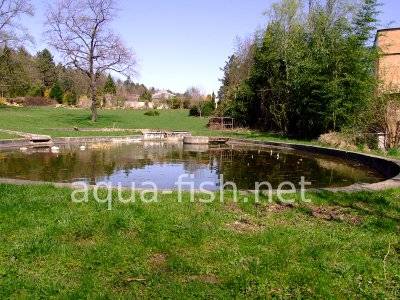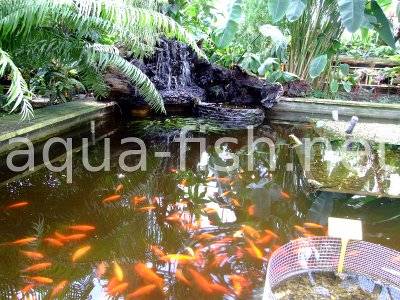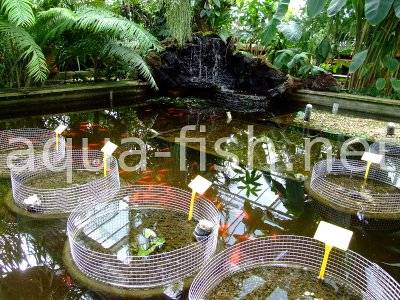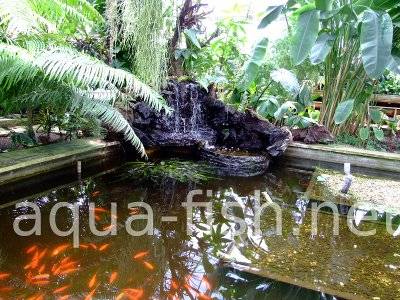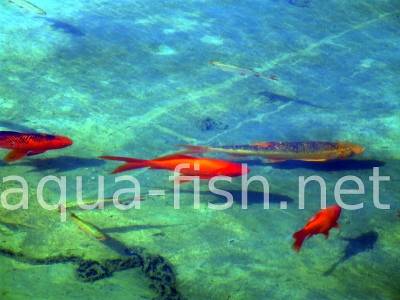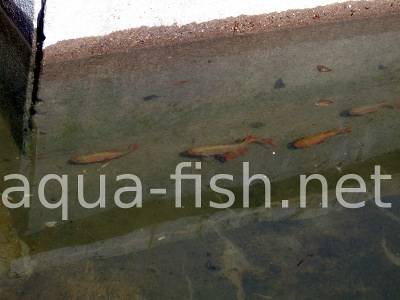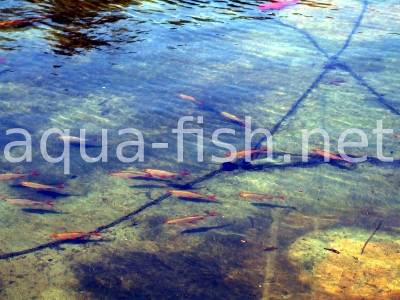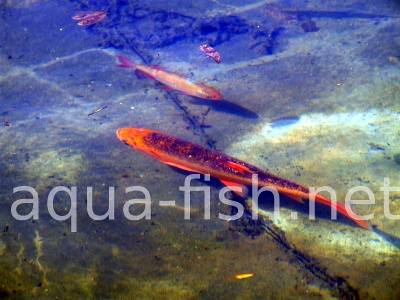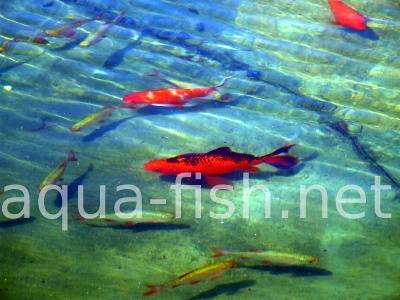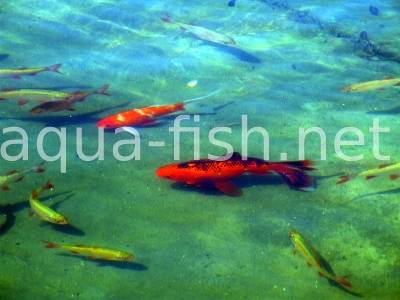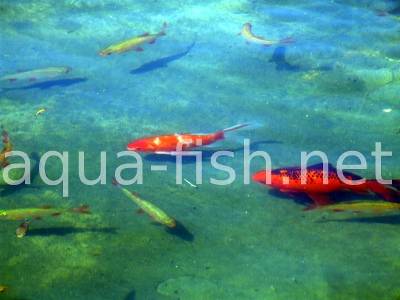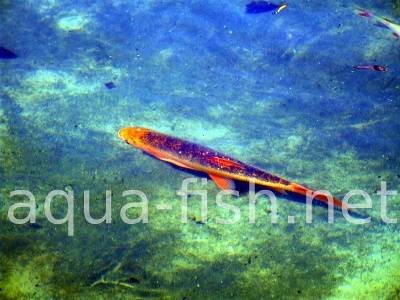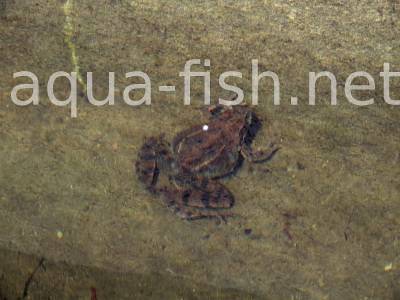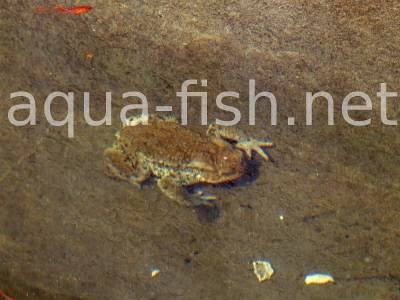Fish ponds FAQ and Forum
Quick links - Answers
- Where do I start
- What’s the best equipment to dig a pond
- How big should the pond be
- What are the prices
- What can damage a pond
- How can I decorate the pond
- Which fish can I add to the pond
- How do I add oxygen to the water
- Chemicals
- Preventing algae in the pond
- Can mosquito larvae live in pond filters
- Freshwater clams in the pond
Brief Description
This page answers all important questions about fish ponds; You're welcome to share your experiences or ask questions at the bottom of this page in case you are unable to find answer in the article below!
One of the most satisfying aspects of fish keeping to me has to be the addition of a garden pond to view in the evenings while relaxing and the joy of seeing healthy fish swimming to me at feeding times. Building and maintaining a pond can be a daunting task if not planned properly but there is always an answer to any question and hopefully most of theses questions will be answered in this article.
Where do I start?
The best way of starting your preparation is to sketch a plan of how you want the pond to look when you have finished the project. Walk around your garden to pick the best spot for your pond, this will also give you a rough idea of how much space you actually have to contain the pond in. Draw up a budget that you know you can afford, this may affect a few decisions you will need to make later on as regards which materials to use etc. When you have drawn your plan, use string or hosepipe, to mark the area that you need for installing the pond.
What’s the best equipment to dig a pond?
In the old days, there was only one way to dig out your pond excavation - the spade and dig by hand, luckily there is now equipment available to cut out the back breaking work. Mobile bobcats or mini diggers are available for hire to dig out the hole, when they are delivered the hire company will even give you a tutorial on using the machinery.
How big should the pond be?
Basically there are no set rules for the length or width of the pond, but the depth needs to be at least 24 - 36 inches (~ 60 - 92 cm) for most fish. In the case of Koi keepers, the depth needs to be even deeper, at least 48 inches (~ 122 cm). The reason for this is that over the winter, the fish will disappear to the bottom of the pond as the water gets cooler, if it isn’t deep enough, the fish will not escape the winter freezes.
What are the prices for garden ponds?
The prices for liners will vary depending on which option you decide to go with. The most common choice is the pre-formed pond liner that has all the ledges and pits moulded into it. These can range from small ponds that sell for 100-200 pounds (200-400 dollars) right up to large pre-formed ponds which will cost up to 500-600 pounds (1000-1200 dollars).
A lot of people will decide to use the butyl sheeting for the liner as this often works out cheaper. The price range for this starts at 5 pounds (10 dollars) per sq/m depending on the thickness you require. When purchasing this type of liner there will always be the cost of the underlay to take into consideration.
Is it possible to have a pond above ground?
Raised ponds have become more popular over recent years, they are considered to be safer when there are small children about and they also save on the problem of excavating the initial plot. The platforms for placing the pond into are often constructed from railway sleepers, or even by building up decorative brick work to create pond walls. In my case I decided to dig down 2 feet (60.96 cm) and then raise the pond by 2 feet (60.96 cm) to reach my pond depth of four feet (121.92 cm).
Always remember that if using a raised pond, the strength of the sides has to be taken into consideration as the water pressure will be high.
What if I can’t afford a high budget pond, can I do one cheaply?
Not everyone has the money to spend on a full pond set up but there are ways to economise. I do know of several pond keepers that have successfully used a water proof tarpaulin for the liner and saved money in that respect. If it’s a small pond that you require, bury a plastic barrel or something similar to hold the water. There are even ways of constructing your own pond filter that will be covered in a later article.
What can damage a pond?
To me there are three main reasons for pond damage occurring. If a butyl liner has been used, over a period of years, sunlight will break down the rubber. Most flexible liners will come with a guarantee for 15-25 years. They will not last for ever and this should be considered before making a final decision as to whether to fit one or not.
Punctures have to be the most common problem for pond keepers, this can occur with the butyl liners and the pre-formed ponds. Dropping a heavy object into the pond or the liner not having enough underlay can cause this.
Frost over the years can cause brickwork to separate or even split. This could take a long time to occur but should also be a consideration when planning your pond.
How can I decorate the pond?
The choices for decoration are endless. Lighting has to be the obvious choice; sets of lights placed around the pond or even under the water have a really pleasing effect. Most lighting can be purchased in a kit form and is relatively easy to install. There is even solar lights purpose built for pond use with no wiring. If using lights fed from the main, get a qualified electrician to fit them for you or check out the work that you have done.
Create a water fall from the excess soil that was removed when digging the pond, if made to look natural the splashing water is soothing and will oxygenate the water at the same time.
Which fish can I add to the pond and what do they need to survive?
There are many fish species suited to living outdoors in a pond. The most common fish added is the goldfish; remember that these will grow larger than they do in any aquarium. As mentioned earlier, Koi are a very popular choice and can co-habit with the goldfish quite peacefully. Other fish that can be added are Golden Orfes, Mosquito Fish, Minnows, and even a Common Plec.
Whichever species of fish you decide to stock, they all have the same basic requirements. Well oxygenated water and well filtered water. The general stocking rule for adding fish is 1 inch (2.54 cm) per every 3 - 4 gallons (13.64 - 18.18 litres, 3.6 - 4.8 US gallons) of water.
Can I use well water in the pond or does it have to be from the mains?
Well water can be added to the pond as long as it isn’t stagnant or poisoned by outside sources. I prefer to use mains water which is hose piped into the pond for not only filling the pond but also for doing the water changes that are required. Some well water could actually be more beneficial to the pond than from other sources, if you are not sure about the well get it tested out before using it.
How do I add oxygen to the water?
Ever seen a pond with a decorative fountain or waterfall? Not only are they decorative but they are also adding oxygen to the water by creating water flow and surface agitation. With fountains, the water is sucked up from below the surface only to be released at the fountain head and as it lands back in the pond, it will have absorbed more oxygen from the atmosphere. Waterfalls use the same principle but give a more natural effect if constructed properly.
Which chemicals do I need to add to improve the water quality?
One of the worst scenarios for pond fish is for the water to turn acidic, when setting up your pond test the water for a neutral or above pH. At some stage it will drop, this is when pH stabiliser will need to be added to give you a pH of 7.0, perfect for pond fish. Another common chemical that is added to the water is a water clarifier; this will give you clear water and a healthy pond.
Water conditioners probably also are required on water changes, the conditioner will lock any ammonia or chloramines in the water and make it safe for the fish.
How do I maintain my pond to its best?
There are several tasks that need performing throughout the year to keep the pond looking its best and keeping the fish at optimum health.
- Once a month perform a water change, at least 5-10% of the total water volume. This will add fresh nutrients to the pond and remove a lot of the nitrates that will build up.
- Clean the sides of the pond with a long handled brush to remove any unwanted algae.
- Check the filters for blockages and occasionally rinse out the sponges to prevent them from getting clogged.
- Remove any debris from the surface of the pond, dead leaves will rot and poison the water.
- Invest in a pond vac to clean the bottom of the pond; any muddy residue can break down into harmful compounds.
- Test your water on a regular basis to make sure the parameters are stable.
How do I prevent algae in the pond?
Algae can become a problem if not kept in check. There are three main causes for algal build up. Sunlight hitting the pond for too many hours in the day - lack of filtration, or the filtration not powerful enough to cope with the water volume. Over feeding is easy to control, basically feed the fish less per meal they will not go hungry. Upgrade you pond filter and even add a UV light to the system. If the pond was planned properly then the sunlight hitting it shouldn’t be an issue. There are natural ways of dealing with algae like Barley Straw, a small bundle is thrown into the pond and it will also help to keep the water clear.
Why do my fish eat the pond plants and are there any they won’t eat?
Part of your pond fish’s natural diet is vegetable matter, in the case of a pond, this means the plants. A lot of ponds plants can cope with fish nibbling on them and will still flourish the only safe plants in my view are the marginal plants that are set on the shallow ledges. These are normally out of the fishes reach. Some plants can be set in aquatic baskets to help protect the roots but the fish will do their best to eat the plants, I’m afraid they don’t realise that they are in there for decoration.
Which fish or invertebrates will help clean my pond?
Two of the best fish that I have ever kept for grazing on pond algae has to be the Common Plec and Sturgeons. They will spend all day grazing on the algae keeping the pond sides clear. Pond snails are excellent pond caretakers. The will also graze on the algae and any uneaten food at the bottom of the pond. The added bonus is that they will not attack the pond plants making them ideal residents. The snails prefer shady areas under the plants as they do not like bright sunlight, if you’re pond isn’t planted, they will not be as happy as they should be.
Can mosquito larvae live in pond filters and can I use a mosquito net over the pond to keep them out?
This question is often asked as many pond keepers find the larvae when cleaning out the filters. They can survive in a pond filter but will do no harm while they are in there. Any that get passed out of the filter will act as free food for the fish anyway.
Using a mosquito net over the pond may prevent any larvae being present in your pond water and they are a high protein food for the fish. In my opinion it is much better to use a standard pond net over the top to allow nature take its course with the insect life.
Can I keep freshwater clams in the pond?
Freshwater clams are actually beneficial to ponds. As they are filter feeders they will eat detritus from the water column and will also reduce the nitrate levels. They do require a sandy substrate so that they can partially burrow into it but as long as the climatic conditions for your country are not too harsh I see no reason why they can’t be housed in the pond.
What is the most humane way to euthanize a sick fish?
One of the dark sides to keeping fish is deciding when to put a fish out of its misery if there is no further effective treatment for any disease or infection it may have obtained. There are several methods of actually killing the fish but some of them are not to my personal liking. The gentlest way of doing this that I have found is to mix some clove oil in a bit of water and then add the fish to it. Basically the fish will pass away peacefully.




